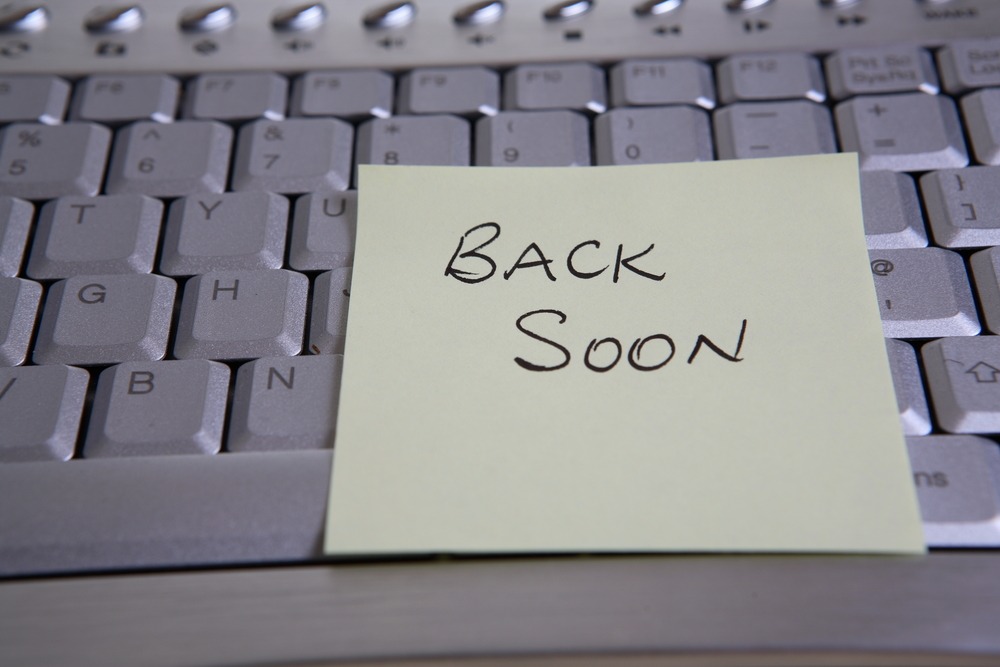
Labor Day Weekend typically represents a line of demarcation for all of us. And this year is no different.
For many of us, it marks the end of summer. In the world of business, it ushers in “the rest of the year” when companies are compelled to perform well and finish strong. But Labor Day Weekend 2023 may take on additional importance this year. It’s the invisible divide between WFH and RTO – return to the office.
Many companies have drawn that line in the corporate sand, including perhaps, some radio companies. But we are still not in a normal at-work environment.
A headline in a recent Forbes article says it all:
Some companies are creatively trying to get their staffs to RTO. The Wall Street Journal reports Smuckers, maker of those jellies and products like Jif peanut butter, is using a novel approach. Rather than designating a couple key days a week when employees are expected to show up, Smuckers has designated 22 “core weeks” a year where they are “ordering” their workers to be on site.
The problem with at-work no-shows is more pronounced in America’s biggest metros. The Journal reports that in 10 major U.S. cities, offices remain only 50% occupied. The chart below from Kastle, the company that makes key cards, shows RTO is very much a work in progress since COVID.

Facebook has its own sense of issues in the RTO dilemma. And Mark Zuckerberg is at the center of it. In a CNBC Make It story, Ashton Jackson reports the new Meta (Facebook’s parent) mandate, requiring 3 in-office days a week tracked by badge swipes, goes into effect after Labor Day.
Meta employees can apply for full-time WFH status, but for most workers, the new policy brings to the surface a belief that corporate leadership, like Zuck, have an empathy deficit.
So what does this mean for radio?
Yesterday’s blog post took a look at how Seattle/Tacoma public radio station KNKX is fostering a sense of community between its Pacific Northwest audience and the station. KNKX became an independent radio station back in 2016, and is now essentially owned by the audience. And to build on this amazing storyline, the station now has great listener-facing facilities in both Tacoma (where it’s licensed) and a new home in Seattle in the heart of iconic Pike Street Market.
It’s a rare situation, to be sure. But the elements that make KNKX special in its marketplace can work for any radio station – commercial, Christian, or public. But it requires a commitment, consistency, and an intrinsic belief in the power of community.
intrinsic belief in the power of community.
And by definition, that means a staff that isn’t just talented and hard-working, but also shows up. In a post-pandemic period where it has become attractive to work from one’s house, my premise flies in the face of the current trend.
To that end, will these spectacular new facilities encourage more KNKX workers to show up at either location? We’ll have to see.
Many of you may be wondering why it matters. After all, the world has adjusted to a reality where a sizable percentage of the workforce now is WFH. Here’s why radio is in a different place than other business categories:
First, it’s hard to serve a community when you’re working remotely. When the staff is scattered all over town (or in some cases, all over the country), it is just more difficult to connect with a station’s key constituencies – listeners, advertisers, community leaders. Plus, the physical location as a meeting place – where ideas, concepts, and innovations form – becomes diminished.
Yesterday’s post illustrated how a sense of place can help employees, managers, listeners, and community leaders come together. When the staff is scattered all over a metro area, only gathering when asked or ordered to, it becomes more challenging to establish a consistent presence.
 Second, a key advantage to working in a radio station is vibe – being in the same physical place with other staffers who share your goals. Imagine “WKRP” where Herb, Les, Bailey, and Jennifer are working from home. There’s a lot less humor, collegiality, and great storylines. It’s the camaraderie that makes working in a radio station more enjoyable than being employed by a law firm, brokerage house, or insurance company.
Second, a key advantage to working in a radio station is vibe – being in the same physical place with other staffers who share your goals. Imagine “WKRP” where Herb, Les, Bailey, and Jennifer are working from home. There’s a lot less humor, collegiality, and great storylines. It’s the camaraderie that makes working in a radio station more enjoyable than being employed by a law firm, brokerage house, or insurance company.
(BTW, I remember watching “WKRP” when it first aired, wondering how just 7 or 8 people could run an entire radio station. Today, there are entire clusters with fewer people in the building. That’s not COVID or WFH – it is RIFs and the toll they’ve taken on the industry.)
Throughout its history, radio stations have served as magnets for interesting, creative, and yes, odd people who can make going to work interesting and entertaining. And then there are the people who visit the station – musical artists, listeners, record label reps, community members, and station tours.
Earlier this month, I blogged about a multimedia campaign created by the Michigan Association of Broadcasters. Its goal is to encourage young people to pursue careers in radio (and television). And a number of scenes in their new videos show young people collaborating and working together at stations. The slogan, “Be There,” also is a not-so-subtle reminder reinforcing the advantages of showing up for the action and adventure of a broadcasting career.
Finally, our new AQ 5 survey among America’s air talent on commercial stations reveals the “culture” at most radio stations has yet to normalize since the lockdowns. Half the personalities in our sample say the vibe in their radio stations has yet to recover post-pandemic. This is especially true for stations in the biggest companies, a data point that matches earlier findings about the lag in RTO in the nation’s largest metros. I believe these air personalities are trying to tell us something important here.

Third, the data is showing remote workers simply do not accomplish as much as those who are on-site. It’s only one study and it was conducted in India, but the National Bureau of Economic Research measured the differences among data entry employees – at home and in a workplace.
The falloff in productivity and accuracy amounts to a 12% loss, growing to 18% over time. In the case of radio, it’s not just about getting things done. It’s the lack of collaborative work, brainstorming, and group creativity that takes place in an environment when most hands are on deck.
These numbers are even more problematic in the face of staff cutbacks, where most workers are wearing multiple hats to begin with. Lower productivity among fewer overworked employees creates even more stress cracks.
Now I realize that many of you reading this are taking serious exception to this reasoning behind showing up at the station. Especially for those who have become accustomed to more family or personal time, and/or those who are actually performing at impressive levels from home.
But looking at the industry globally and over time, it is clear we’re going to see radio facilities dwindle in physical size. Smaller buildings comprised of just the essentials – a studio, a rack room, and a handful of office spaces or cubicles – become bland and quiet, even with a few token platinum albums or community awards on display. Even having the monitors cranked up in the hallway becomes meaningless when there’s virtually no one in the building.
Scores of times over the past three years, I’ve heard managers explain it’s not necessary for salespeople and others to physically be in the station. They tell me most function just fine working remotely. But sellers are part of the culture in a radio station, too. And in order for them to effectively market their product to advertisers and sponsors, they need to know the feel and energy of their stations – what it means when Metallica, Springsteen, Beyoncé, or Taylor Swift descend on their markets. Or how it feels when the book comes out or when the station or a staff member earns a coveted award.
 Some of you will no doubt tell me I’m an old school Boomer insensitive to today’s radio station workers seeking a work/life balance. Or that if companies actively enforce returning to the station, they will lose many of their current staffers who will easily find work elsewhere. Or that it’s simply naive to expect workers to RTO in 2023.
Some of you will no doubt tell me I’m an old school Boomer insensitive to today’s radio station workers seeking a work/life balance. Or that if companies actively enforce returning to the station, they will lose many of their current staffers who will easily find work elsewhere. Or that it’s simply naive to expect workers to RTO in 2023.
Maybe, but if radio is to regain its footing post-pandemic, it’s going to have to rethink the givens of the past few years. Yes, the world of work changed. thanks in no small part to COVID – that’s a fact of life. But broadcasting’s lifeblood is its people. And the chemistry that courses through programming, sales, promotions, management, and engineering working to create and market a product for a local community works best when most hands are on deck.
I don’t know just how many stations in how many markets fall into the WFH category more than three years after COVID first ravaged the U.S. and the world. There has been scant coverage in the industry trades. But I do know you can’t build much of a culture in a building where there’s just a handful of employees. Try going to see a comedy in a movie theater where the audience is in the single digits. There are few laughs, despite the great writing, wonderful acting, and amazing timing.
The RIFs of these past few years hasn’t helped. And that’s on ownership. But now RTO is the next acronym striking fear in radio workforces. Let’s hope it doesn’t become a long-term struggle because if radio is to stabilize and even grow, the quality of its workplaces could turn out to be a defining difference.
Just ask Mr. Carlson and Andy. Hopefully, they’re “in” today.
- What To Do If Your Radio Station Goes Through A Midlife Crisis - April 25, 2025
- A 2020 Lesson?It Could All Be Gone In A Flash - April 24, 2025
- How AI Can Give Radio Personalities More…PERSONALITY - April 23, 2025




Couldn’t agree more, Fred – but as Tommy James once sang ” I Think We’re Alone Now”…………………………….
Or “Two Of Us.” 🙂
There have always been tensions in radio stations between programming, sales, engineering, and management, not to mention clashes between egos and insecurities of talented people. All of those tensions increase with isolation. It’s much easier to demonize someone when you don’t look them in the eye or see their everyday demeanor. My station has instituted a monthly all-hands meeting that keeps everybody on the same page when it comes to sales, promotions, special events, engineering, and ratings. There’s a noticeable difference in the vibe, both when people are in the building and not in the building. That meeting also helps everyone understand the role everyone plays in the overall enterprise. We still have many people who can spend some time working from home, but getting back in the office at least part-time seems to refocus people on the task at hand. More importantly, there’s a lot more collaboration, relationship-building, and mentoring that happens when people are together in the building.
I think the idea of an all-hands monthly meeting is a good one, Brian, but I worry about the 30 days in between meetings. You’re spot on when you say it’s easier to hate on people you’re isolated from. And we all know those negative feelings can fester. Thanks for the feedback on that periodic meeting, a necessity in this environment.
Lots to unpack. Radio needs RTO for the reasons listed and for presumably more in car AQH. Both are starting to seem more anachronistic as time passes. Then there’s the new looming COVID variant and the “what ifs” of zealous govt officials to start the whole cycle again. Your note about less productivity is what I expected from “at home”. But the figures, while double digit, seem manageable to most corporations over time as technology changes. And especially as they also grapple with image issues of being portrayed as the bad guys for requiring RTO. I believe for radio the real discussion is the one about industry competition. I am nearby to a market with several radio players. But the main three are two big box players, let’s call them IH and AU and another mid size player. Mid size player has been and continues to be all in office for a long time. The other two are definitely not and they continue to lose staff due to RIF. The smaller player has three times the local staff of the other two combined. And they are reaping the local rewards. You can hear it in local advertising on air. You can see it at events. Presumably they can see it in their bottom line.
I hope your math estimates are in the ballpark because they would make the case for 1) staff, and 2) staff present and accounted for. Appreciate your views on this. And it’s always nice to hear from another Fred.
Realize the staffing numbers sound ludicrous but by known headcount it factors out. Especially when one of the big box places has a total of 4 people (all in sales/air/everything).
It is truly sad to see what some of these big company players have wrought on our business. One company here has 6 stations and only about 4 full time employees and a couple of part time board ops. The other consolidator has about the same. The cluster I work for has about a dozen full time local people and about another 8 or 9 part timers. And our cluster typically outperforms all of the others in town. I think most all of our sales people are now in the office again, too. We rarely see them, of course because they’re out selling. But, every once in a while, someone will stop in.
Kevin, many comments along these lines, but I think you hit a key point when you talk about how smaller companies can outperform the big boys. It simply help to have pro staffers who are engaged. Simple, right?
So you can work remotely from a central voice tracking facility just not from your apartment. Got it.
Yup, I had this same thought. It seems kinda rich for companies to lament the loss of camaraderie that comes from a staff working closely together after they’ve decimated those staffs, and similarly delusional to think they’ll be able to recreate something like it by bringing back a dozen people to work in a big and empty facility.
No question, Brian. Station culture has been badly damaged in many cases by staff cutbacks and long distance tracking. You reap what you sow.
The Chemistry at a station and studios is dynamic. The right use of WFH adds efficiency.
Spot on, Clark.
Fred, the part that hurts is those seeking a “work/life” balance. In my 35+ years of marriage, my “work/life” balance included dozens of events that my family attended, events that wouldn’t have existed without the involvement of the station. Concerts, festivals, demolition derbies. To say it affects their “work/life” balance to attend a station event-or even show up to the station is a red flag in their attitude. Imagine where Josh Allen or Lionel Messi would be if their attitude was to “not make a game or practice because it would upset my work/life balance”. Extreme examples for sure-but one needs to commit to their media position in life to make it successful. Some WFH situations are just excuses to be LAZY, in my opinion1
Allen and Messi get 4 months off work every year and make millions… NOT THE SAME.
One of our readers take exception to your Messi/Allen comparison. Yeah, they get more “time off” than most of us, but they also perform under far more pressure than all of us. If you love what you do, you do it.